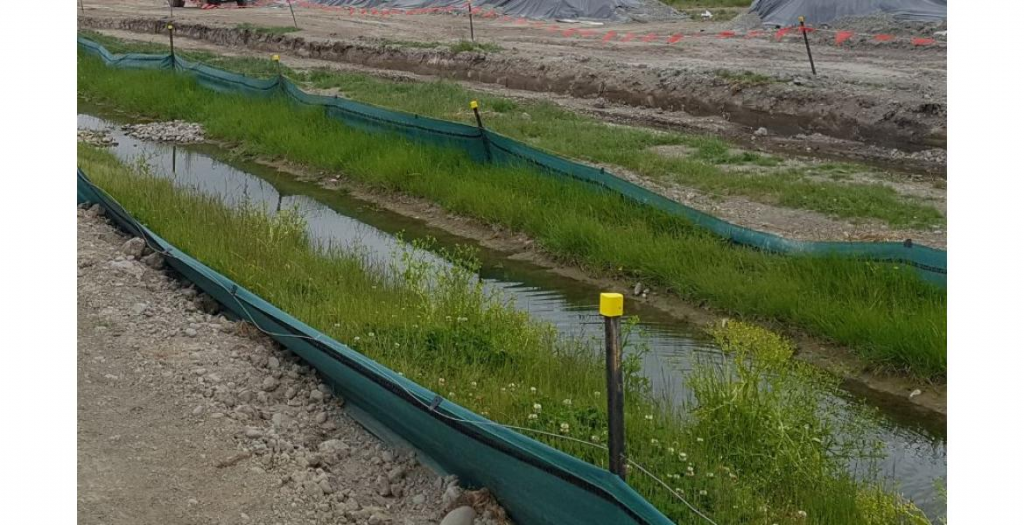Why Erosion Control Matters on Construction Sites
Understanding the Importance of an Erosion and Sediment Control Plan (ESCP)
When starting a new construction project, most people focus on design, budgeting, and safety. However, one critical aspect often gets overlooked: erosion control. Construction sites can cause significant environmental harm, especially through soil erosion and sediment runoff. That’s where an Erosion and Sediment Control Plan (ESCP) becomes essential.
In this article, we’ll explain what an ESCP is, why it’s important, and how it helps prevent runoff on Australian construction sites. Whether you’re a homeowner or a contractor, understanding erosion management can save you time, money, and legal trouble.

Why Is Erosion Control Important?
During construction, activities like digging, grading, or earthmoving disturb the soil. This loose soil can be easily washed away by rain, leading to sediment runoff into nearby:
- Creeks and rivers
- Stormwater drains
- Roads and neighbouring properties
Uncontrolled runoff can cause:
- Water pollution
- Blocked stormwater systems
- Environmental degradation
- Damage to nearby properties
In Australia, these issues can also lead to construction delays, legal fines, and expensive remediation.
What Is an Erosion and Sediment Control Plan (ESCP)?
An Erosion and Sediment Control Plan (ESCP) outlines how a site will manage erosion and sediment during construction. This plan is often mandatory before work begins, particularly for larger developments or sites near sensitive areas.
An ESCP typically includes:
- How stormwater will flow across the site
- Safe storage areas for soil and materials
- Erosion control measures like mulch, barriers, and silt fences
- Temporary drainage paths to redirect runoff
These methods are tailored to each specific site to reduce environmental impact.
Who Needs an ESCP in Australia?
In most Australian states, including Queensland, developers, builders, and contractors must have an ESCP approved by the local council or regulatory body before construction begins.
However, even for smaller projects—such as home renovations—implementing erosion control measures is considered best practice and supports building code compliance.
What Makes a Good ESCP?
A high-quality ESCP is more than just a checklist. It’s a strategic plan based on your site’s unique features. A strong ESCP should include:
1. Site Layout & Water Flow Design
A map that outlines slopes, drainage patterns, and soil types.
2. Erosion Control Measures
Techniques like turfing, covering exposed soil, or stabilising slopes.
3. Sediment Control Systems
Tools such as silt fences, sediment traps, and check dams.
4. Maintenance Strategy
Scheduled inspections and updates to ensure measures stay effective.
5. Rainfall and Weather Considerations
Contingency plans for wet weather and storm events.
These components help prevent building contractor mistakes that could cause regulatory issues or costly delays.
Easy Tips to Prevent Construction Site Erosion
Follow these practical steps to manage erosion effectively:
- Start early: Develop your ESCP during the planning phase.
- Use the right tools: Match erosion controls to your soil and landscape.
- Monitor regularly: Inspect the site after storms or heavy rain.
- Train your crew: Make sure every worker understands and follows the ESCP.
ESCP and Building Code Compliance in Queensland
Following an approved ESCP shows your commitment to professional construction practices. In Queensland, it supports QBCC building code compliance and helps avoid penalties from local councils or the QBCC itself.
By preventing sediment runoff, you not only stay compliant—you also build trust with clients, inspectors, and neighbours.
Protect Your Site and the Environment
No matter the size of your project—new home, renovation, or commercial development—erosion control should be a top priority. Implementing an ESCP protects:
- Your land
- Your reputation
- Your bottom line
- The local environment
Get Help from the Erosion Control Experts
At Ostanes Engineering, we specialise in creating custom erosion and sediment control plans that meet both regulatory and environmental standards. Our team can inspect your site, identify risks, and help you stay compliant.
